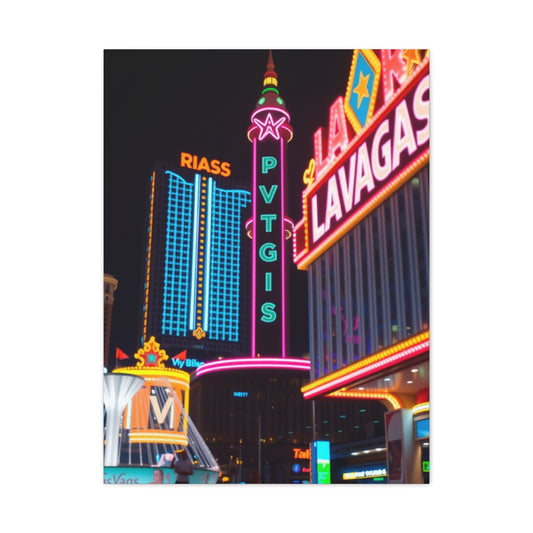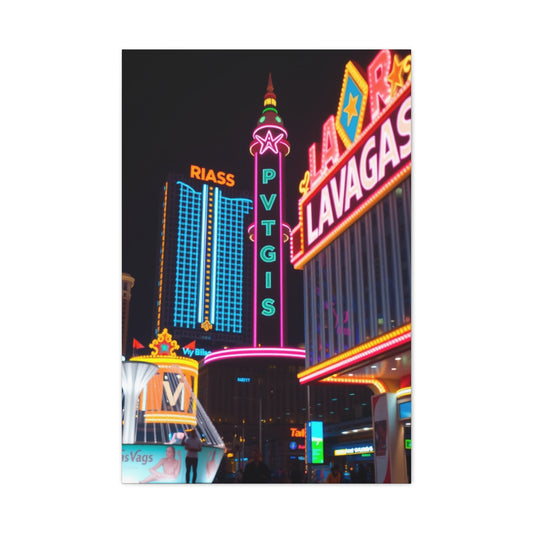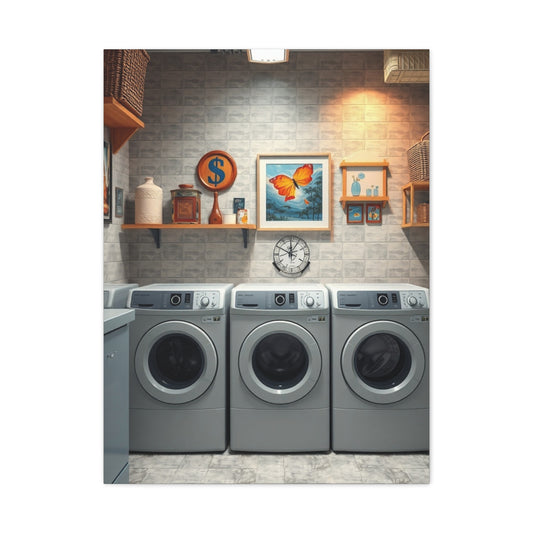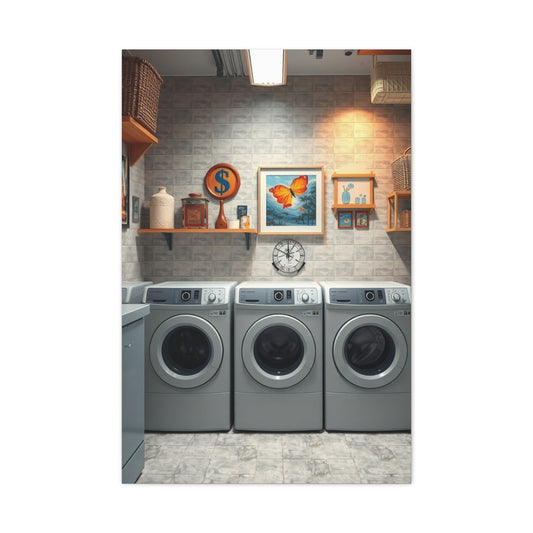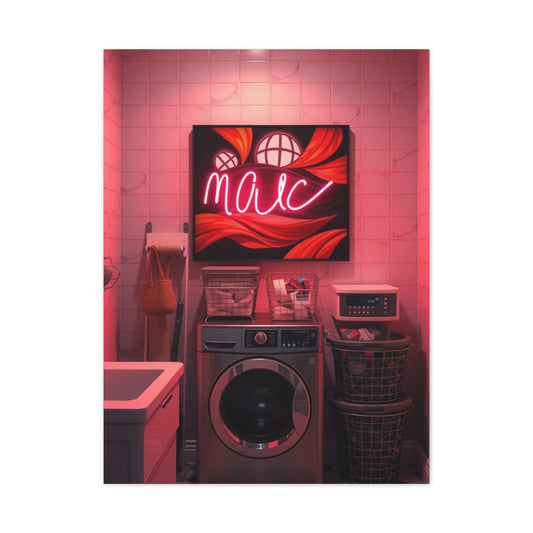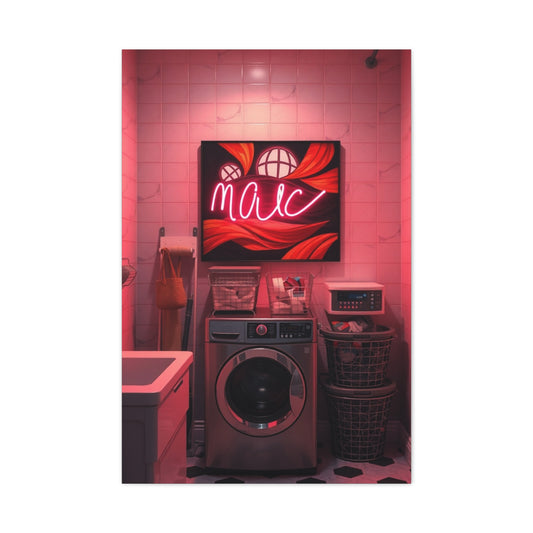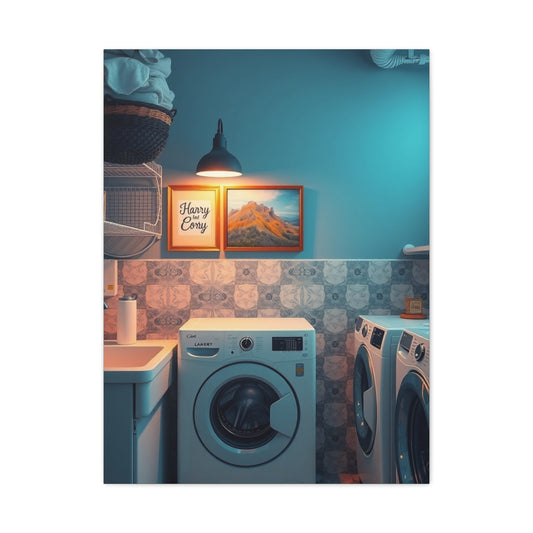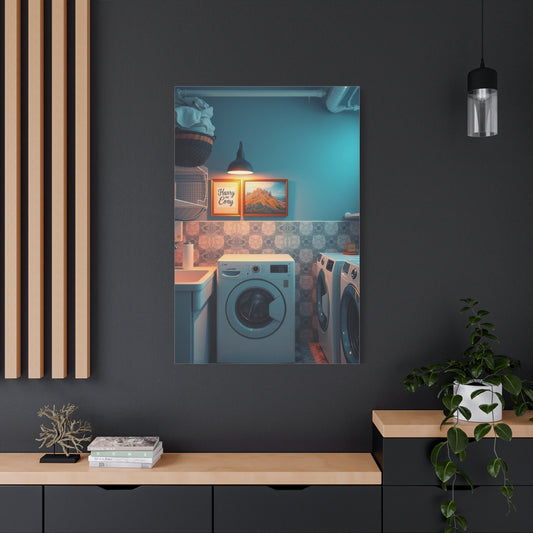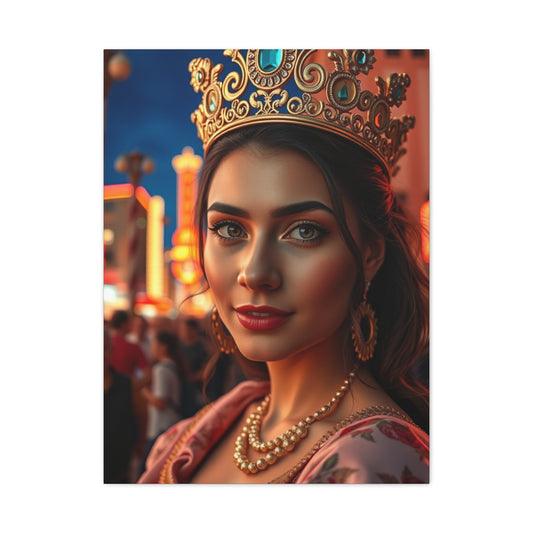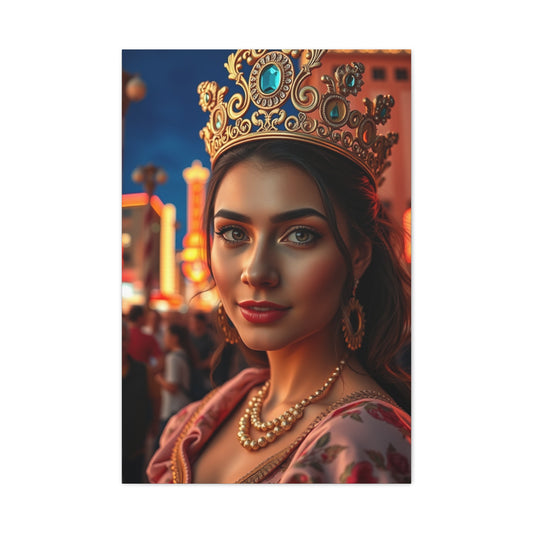When it comes to stepping into the world of DSLR photography, choosing the right camera is crucial for beginners. The Canon EOS Rebel T6 (also known as the 1300D), launched in 2016, continues to be a popular choice among newcomers to photography due to its affordability and user-friendly features. While newer models have since entered the market, the 1300D remains a strong contender in 2025 for those looking for a solid, dependable camera that won’t break the bank.
Key Features and Specifications of the Canon EOS 1300D
The Canon EOS 1300D was designed to cater to beginners who are exploring the world of DSLR photography. While it may not have all the bells and whistles of high-end models, it offers a fantastic starting point for those looking to learn. One of the standout features of this camera is its 18-megapixel APS-C CMOS sensor, paired with the DIGIC 4+ image processor. This combination ensures fast processing speeds, vibrant image quality, and a responsive camera experience, even by modern standards.
The autofocus system is simple yet effective, offering nine focus points, with a single cross-type point in the center. This cross-type autofocus point enhances the accuracy and speed of focusing, particularly when capturing moving subjects, though the performance can be slower in Live View mode. This is not an issue for beginners who will likely be shooting using the viewfinder most of the time. The Canon EOS 1300D’s autofocus system is reliable for basic photography needs and performs well in various conditions.
While the camera doesn’t have in-body stabilization, the included 18-55mm kit lens does offer built-in image stabilization. This compensates for minor camera shakes, helping to produce sharp images in a wide variety of scenarios. Additionally, the 1300D can handle low-light situations fairly well, with an ISO range of 100 to 6400, expandable to 12,800. While higher ISO settings do introduce noise, the camera still delivers decent results at ISO 1600 and below, making it a good choice for shooting in everyday environments.
In terms of video capabilities, the Canon EOS 1300D supports Full HD 1080p video recording at 30fps, which is sufficient for most casual video work. However, it lacks more advanced video features like 4K resolution or 60fps recording, meaning it is not the ideal option for videographers who demand high-level video performance. Nevertheless, its ability to manually control exposure during video recording makes it a good starting point for those looking to experiment with video.
Image Quality and Performance in 2025
Even though the Canon EOS 1300D has been around for several years, its image quality remains impressive. The 18-megapixel APS-C sensor delivers sharp, clear images with good dynamic range, making it ideal for capturing vibrant photographs in well-lit settings. The color accuracy and overall vibrancy of photos benefit from the camera's DIGIC 4+ image processor, ensuring that your images have a natural, life-like quality.
The camera’s JPEG files are of decent quality, with good sharpness and color reproduction. However, for those who enjoy editing their photos, the 1300D’s RAW image files offer more flexibility and room for post-processing adjustments. RAW files provide better control over things like exposure, white balance, and contrast, allowing you to fine-tune your photos and make the most of the camera’s performance.
In terms of low-light performance, the Canon EOS 1300D does show some noise as the ISO climbs, but it holds up relatively well. For optimal image quality, it is best to keep the ISO between 100 and 1600, as anything above that tends to produce noticeable grain. If you plan to shoot in low-light conditions often, pairing the 1300D with a faster lens, such as the Canon EF 50mm f/1.8 STM, can greatly improve autofocus accuracy and reduce the effects of camera shake.
When shooting in diverse lighting situations, the Canon EOS 1300D does a solid job. While it may not have the most advanced noise reduction features or in-body stabilization, it is still capable of producing clean images in both well-lit and dimly lit environments. Additionally, using lenses with built-in stabilization can help reduce shake and improve image clarity, especially when shooting handheld.
Who Should Consider the Canon EOS 1300D in 2025
The Canon EOS 1300D is an excellent choice for beginner photographers in 2025 who are looking for an affordable and easy-to-use DSLR. If you are new to photography, this camera offers a straightforward design, intuitive controls, and a solid platform for learning the basics of exposure, composition, and lighting. Its simplicity and ease of use make it less overwhelming for first-time DSLR users compared to more complex models.
The camera excels in user-friendliness, featuring several scene modes such as Portrait, Landscape, and Night Portrait, which help beginners take stunning photos with minimal effort. These automatic modes adjust the camera settings to suit the specific environment, allowing you to focus on composing your shots rather than constantly adjusting settings. While the 1300D may not be the most feature-packed option available, it still offers enough flexibility to explore different types of photography, from landscapes to portraits and street photography.
Another advantage of the 1300D is its compatibility with a wide range of Canon lenses, including both EF-S and some EF lenses. As you gain experience and upgrade your lens collection, the 1300D can grow with you. Whether you want to shoot wide landscapes or intimate portraits, the camera can handle various genres of photography with the right lenses.
Although newer models such as the Canon EOS 2000D or 250D provide enhanced autofocus systems, better video capabilities, and improved overall performance, the 1300D is still a strong contender for those on a budget. If you’re on a budget but want a reliable and easy-to-use DSLR, the Canon EOS 1300D remains a strong contender.
The Canon EOS 1300D’s Build, Handling, and Connectivity
In terms of build, the Canon EOS 1300D is lightweight, portable, and comfortable to handle. Its compact design makes it a convenient option for carrying around during day trips or casual photography outings. The camera is constructed with polycarbonate resin, which provides a sturdy yet lightweight body. While it is not weather-sealed, it is durable enough for everyday use and light outdoor photography.
The 1300D’s grip is one of its highlights, offering a comfortable hold even during extended shooting sessions. Its controls are well-placed, with easily accessible buttons for adjusting settings like ISO, shutter speed, and aperture. The 3-inch LCD screen provides a resolution of 920k dots, offering clear visibility of your images and settings. Although it lacks a touchscreen, which may feel outdated compared to newer smartphones and cameras, it makes up for this with intuitive controls and a traditional interface that will be familiar to many users.
For connectivity, the Canon EOS 1300D includes built-in Wi-Fi and NFC capabilities, allowing you to wirelessly transfer images to your smartphone or tablet. These features also allow for remote control of the camera using the Canon Camera Connect app, which can be particularly useful for group shots or self-portraits. While it may not offer the fastest or most robust wireless performance, it adds a modern touch to an otherwise basic camera setup.
The Canon EOS 1300D also performs well in terms of battery life, offering around 500 shots on a single charge. In colder conditions, the battery life may decrease to about 410 shots, but this is typical for most entry-level DSLRs. The camera’s battery performance is adequate for most casual shooting needs, though avid photographers might want to carry an extra battery for longer sessions.
Understanding the Build and Handling of the Canon EOS 1300D
The Canon EOS 1300D stands out as an accessible and user-friendly DSLR, perfect for newcomers to the world of photography. One of its most appealing qualities is its lightweight design. Weighing in at just 485 grams, this camera is incredibly easy to handle and transport, making it an ideal companion for those who enjoy capturing spontaneous moments without the added burden of a hefty camera. Whether you're exploring a new city, documenting everyday scenes, or photographing your family, the camera's compact build ensures comfort and ease, even during extended shooting sessions.
Constructed from a blend of polycarbonate resin and carbon fiber with glass fiber, the 1300D strikes a balance between durability and lightness. While it may not boast the same rugged build as higher-end models, its structure is sufficiently robust for typical everyday use. It's designed to withstand the usual knocks and bumps that can come with casual shooting, though it’s important to note that the camera is not equipped with weather sealing. This means that while it can handle the occasional drizzle, it’s not built for prolonged exposure to harsh weather conditions like rain or snow. For outdoor enthusiasts who might venture into less forgiving climates, protective cases can serve as an additional safeguard against the elements.
The grip on the Canon EOS 1300D deserves mention, as it is ergonomically designed for maximum comfort. The textured surface ensures a firm hold, which is particularly useful when shooting handheld in challenging environments or when a tripod is not available. For beginners, the grip allows for a relaxed yet secure experience, preventing fatigue during long photo sessions. Although the camera’s body is light, it doesn’t feel flimsy, offering a reassuring solidity that adds to the overall sense of reliability.
However, there are some limitations to consider when it comes to the camera’s design. One feature notably absent is the touch screen common feature found in many modern cameras and smartphones. While this might seem like an inconvenience in today’s tech-driven world, it doesn’t detract from the 1300D’s usability. The physical buttons and dials, though traditional, are well laid out, providing intuitive access to key settings. The camera’s user interface is straightforward, ensuring a seamless learning curve for those who may be unfamiliar with more complex digital devices. For users who are accustomed to touch controls, the 1300D might feel slightly outdated, but the physical controls remain efficient enough for easy navigation.
Navigating the User Interface and Controls
The Canon EOS 1300D is engineered with simplicity in mind, making it a perfect entry-level DSLR for those eager to explore photography. The camera’s interface is designed to be intuitive and easy to understand, enabling beginners to quickly familiarize themselves with essential settings. The organized menu system ensures that adjusting key parameters like ISO, aperture, and shutter speed is straightforward. For newcomers, these features are essential in developing a deeper understanding of manual settings and the creative control they provide.
A standout feature for new photographers is the Creative Auto mode, which allows users to make basic adjustments without delving too deeply into the technical aspects of manual photography. This mode lets you adjust the background blur or lighting effects with minimal effort, offering a gentle introduction to DSLR photography for those transitioning from smartphone cameras. It’s a great tool for learning the basics of exposure and composition while still leaving room for creative exploration.
The Canon EOS 1300D also boasts a mode dial that offers easy switching between various shooting modes. Whether you’re looking for fully automatic settings or want to explore more hands-on options like Aperture Priority, Shutter Priority, or Manual mode, the dial simplifies this process. For beginners, the inclusion of scene modes such as Portrait, Landscape, and Sports helps eliminate the guesswork, automatically adjusting the camera’s settings to optimize them for specific scenarios. These modes take the pressure off new users, allowing them to focus on composing the shot without worrying about intricate adjustments.
When it comes to the LCD screen, the 1300D features a 3-inch display with a resolution of 920,000 dots. While the screen offers sharp and vibrant images for everyday use, it lacks a tilting or articulating design. This can be somewhat limiting when shooting at odd angles, such as when you need to capture a high-angle shot or shoot from the ground. While a flexible screen is a valuable addition in some situations, the fixed screen on the 1300D remains clear and visible enough for typical outdoor and studio photography. The screen’s brightness helps it perform well in most lighting conditions, although it’s not quite as high-performance as some of the newer models in Canon's lineup.
Autofocus and Performance for New Photographers
When it comes to autofocus, the Canon EOS 1300D relies on a 9-point AF system, which includes a single cross-type point located in the center. While the system is fairly basic compared to more sophisticated DSLRs, it’s more than capable of meeting the needs of beginner photographers. The autofocus points are spread evenly across the frame, and the central cross-type point proves particularly helpful for accurately focusing on subjects positioned in the middle of the shot. While this autofocus system isn't the fastest or most advanced on the market, it performs well for casual and everyday shooting.
For users who prefer to shoot with the LCD screen, the autofocus performance can feel somewhat sluggish in Live View mode. This is a common trait among most DSLR cameras, as they use phase-detection autofocus in the viewfinder and contrast-detection autofocus in Live View. While the autofocus speed may be slower when using the LCD screen, it remains fast and precise when shooting through the viewfinder. The camera’s autofocus system, particularly when paired with faster lenses like the Canon EF 50mm f/1.8 STM, ensures that subjects are quickly and accurately brought into focus.
The Canon EOS 1300D offers three autofocus modes: One-Shot AF, AI Servo, and AI Focus. One-Shot AF is ideal for capturing still subjects, while AI Servo is designed for moving subjects, offering continuous focus tracking to keep fast-moving objects sharp in the frame. The AI Focus mode automatically switches between One-Shot and AI Servo based on the situation, providing versatility in different shooting scenarios. For those looking to capture action shots, the Predictive AF feature is useful for tracking moving subjects, helping ensure that fast action is captured clearly.
In terms of burst shooting, the 1300D can capture up to 3 frames per second. While this is sufficient for casual photography, it may fall short in more demanding situations like sports or wildlife photography, where faster burst rates are crucial to capturing fleeting moments. Although the 1300D’s performance is perfectly suitable for most casual photographers, those looking to shoot high-speed action may find it limiting and may want to consider more advanced models for faster frame rates.
Battery Life and Video Recording Capabilities
The Canon EOS 1300D is powered by the LP-E10 rechargeable battery, which provides a solid battery life of approximately 500 shots per charge. This is typical for entry-level DSLRs, and most users will find it sufficient for a day’s worth of shooting. However, for those planning extended photo sessions or shooting events like weddings or concerts, carrying an extra battery is always a good idea. In colder conditions, you may notice a slight decrease in battery performance, with the camera typically lasting around 410 shots in freezing temperatures. This is a common issue with lithium-ion batteries, and those who shoot outdoors in cold climates should plan accordingly by keeping spare batteries handy.
While the Canon EOS 1300D is primarily designed for still photography, it also offers Full HD 1080p video recording at 30 frames per second. For casual videography or content creation, this camera provides ample capabilities to capture high-quality video, though it may not meet the needs of those seeking 4K recording or more advanced video features. For beginners, the ability to manually adjust exposure settings during video recording is a valuable feature, offering more control over the final video output, especially when shooting in dynamic lighting conditions.
One drawback for those interested in video is the absence of a dedicated movie button. Instead, users must manually switch the camera into video mode via the mode dial, which can feel somewhat clunky when compared to modern cameras that offer a one-touch video record function. While this may not be a significant issue for casual users, it could be a slight inconvenience for those accustomed to more streamlined video recording workflows. Despite this, the Canon EOS 1300D still provides ample video functionality for beginner videographers, but more seasoned content creators may want to explore cameras with enhanced video capabilities and faster autofocus for video capture.
Canon EOS 1300D Review: Exceptional Image Quality for Beginners
The Canon EOS 1300D, a budget-friendly DSLR, offers impressive image quality that serves as an excellent tool for novice photographers aiming to take their photography skills to the next level. Equipped with an 18 MP APS-C CMOS sensor and paired with the DIGIC 4+ image processor, this camera produces vibrant, detailed images. While it’s positioned as an entry-level option, the EOS 1300D’s performance in capturing clear, sharp, and colorful photographs is commendable, especially when shooting in optimal lighting conditions. This combination of the sensor and processor ensures quick processing speeds, making it a reliable option for those just starting their photography journey.
Even though this camera lacks the extensive dynamic range and color depth seen in more advanced models, its output remains quite pleasing in most shooting scenarios. The sensor delivers accurate colors and solid sharpness, making it a versatile choice for various photography types, including portraits, landscapes, and street photography. Additionally, the EOS 1300D allows you to shoot in RAW format, a powerful feature for photographers keen on post-processing. RAW files retain more image information, which is essential for adjusting highlights, shadows, white balance, and exposure during editing. This ability to fine-tune your photos is invaluable for those eager to develop their editing skills and create stunning final results.
Performance in Different Lighting Conditions: From Bright to Low-Light Scenarios
While the Canon EOS 1300D excels in well-lit conditions, its performance starts to show signs of limitations when shooting in low-light environments. Under bright sunlight, the 18 MP sensor captures images with exceptional sharpness, vivid color reproduction, and solid contrast. Whether you're capturing a sprawling landscape, bustling city scene, or an intimate family portrait, the images retain fine detail with minimal noise. Even areas with more saturated colors are well-represented, ensuring that the images appear vibrant without losing fidelity.
However, when the light starts to fadewhether it's during dusk or indoors, the camera's limitations become more noticeable. The native ISO range tops out at 6400, which can be extended to 12800, but higher ISO settings introduce a noticeable amount of noise in your images. This is a common issue with entry-level DSLR cameras, and it's something that photographers must understand as they push the camera to its limits. Although noise can become more pronounced above ISO 1600, there are ways to combat it during post-processing through noise reduction techniques, which can help maintain image clarity.
For low-light shooting, another factor to consider is the lack of in-body image stabilization. While this feature is often available on more premium models, its absence on the Canon EOS 1300D means that camera shake can cause blur in low-light photos. The solution here lies in pairing the camera with lenses that feature built-in stabilization. The Canon EF-S 18-55mm IS II kit lens is an ideal starting point, offering stable shots even in dimly lit conditions. If you want to take your low-light photography even further, consider upgrading to lenses with wider apertures, like the Canon EF 50mm f/1.8 STM. This lens not only helps in reducing noise at lower ISOs but also produces beautifully blurred backgrounds, making it perfect for portrait photography.
Exploring the Importance of Lenses and Autofocus Performance
A key advantage of the Canon EOS 1300D is its compatibility with an extensive range of Canon lenses. This includes both EF-S lenses designed for crop sensors and full-frame EF lenses. The flexibility to use a broad array of lenses means that as you grow in your photography skills, you can build a versatile lens collection without being restricted to a single lens system. For those just starting, the standard 18-55mm f/3.5-5.6 kit lens offers a good all-around option for various photography needs, such as landscapes, portraits, and even macro shots.
However, for those looking to take their photography to new heights, upgrading to prime lenses can significantly enhance their image quality. One standout option is the Canon EF 50mm f/1.8 STM, known for its fast aperture and ability to create stunning bokeh effects in portraits. The lens' wider aperture allows more light to reach the sensor, improving your ability to shoot in low-light conditions while maintaining sharp focus and minimal noise. Additionally, its fast autofocus ensures quicker subject tracking and clearer shots in dynamic scenes.
For photographers who love capturing wide-angle landscapes, architectural shots, or scenic vistas, the Canon EF-S 10-18mm f/4.5-5.6 IS STM lens is an excellent choice. This lens offers a wide field of view, allowing for expansive shots while minimizing distortion. Its image stabilization also provides better performance in low light, giving you sharper results when shooting handheld. By investing in quality lenses, you can greatly improve the overall quality of your images and take full advantage of the Canon EOS 1300D’s imaging potential.
The autofocus system of the Canon EOS 1300D, though basic, is more than sufficient for most types of beginner photography. The camera features a 9-point autofocus (AF) system, with one cross-type point in the center. This cross-type point is beneficial for detecting both horizontal and vertical lines, which aids in faster and more accurate focusing. For everyday scenarios, such as portraiture, street photography, and landscapes, the autofocus system works efficiently, locking focus quickly on static subjects.
However, like many entry-level DSLRs, the autofocus speed can slow down in Live View mode. Here, the camera switches to contrast-detection autofocus, which is typically slower than phase-detection autofocus. For photographers who need rapid subject tracking or those shooting in low-light environments, this can result in some frustration, as the camera may experience focus hunting. To overcome this, using the viewfinder instead of Live View mode is often preferable for more reliable and faster autofocus performance. If you're shooting fast-moving subjects like sports or wildlife, it’s worth noting that the Canon EOS 1300D’s autofocus may not be fast enough. In these cases, you may want to explore more advanced models with better autofocus systems, such as the Canon EOS 90D or the Canon EOS 7D Mark II, which are better equipped for action photography.
Video Performance: Entry-Level Video Capabilities with Manual Control
In addition to its solid still photography performance, the Canon EOS 1300D offers Full HD 1080p video recording at 30 frames per second (fps). While this is not as advanced as 4K video found on newer models, it is still more than sufficient for beginner videographers. The 1080p resolution provides sharp and clear footage, making it an excellent choice for casual video creators, vloggers, or hobbyists looking to start producing high-quality videos.
One of the standout features of the Canon EOS 1300D is its ability to manually control exposure settings while recording video. This offers creative flexibility when filming in dynamic lighting conditions. You can adjust settings such as exposure, white balance, and manual focus to fine-tune your footage and achieve the desired effect. For those new to videography, this control is a valuable feature that enhances your ability to experiment with different looks and styles.
Despite these benefits, there are a few limitations to be aware of when shooting video with the Canon EOS 1300D. The lack of a 60fps option may be a drawback for users interested in shooting smooth slow-motion footage. Additionally, the camera’s autofocus system, although suitable for still photography, is relatively slow in video mode. This could be an issue for those who need quick, continuous autofocus adjustments while recording, especially in fast-paced scenes. If video is your primary focus and you need more advanced features like 4K recording or faster autofocus, you may want to consider looking into other models in Canon's lineup, such as the Canon EOS 850D or the mirrorless Canon EOS M50.
Another inconvenience when filming with the Canon EOS 1300D is the absence of a dedicated movie recording button. Instead, you must manually rotate the mode dial to the video setting to begin recording. While this keeps the design simple and streamlined, it can be a bit cumbersome, especially when you need to start recording quickly. Moreover, adjusting settings such as exposure while recording requires navigating through the camera’s menu, which can be distracting and potentially slow down your filming process, especially if you're filming fast-moving subjects.
Despite these minor drawbacks, the Canon EOS 1300D remains a great option for those just getting into videography. The manual controls provide creative freedom, and the 1080p video quality is more than sufficient for most casual content creation needs. However, if you require more advanced video features, other Canon models offer enhanced video capabilities and faster autofocus systems.
Canon EOS 1300D: A Beginner’s DSLR – A Closer Look at Its Limitations
When you step into the world of photography, the Canon EOS 1300D is a popular choice due to its affordability and easy-to-use interface. However, while it is a solid option for newcomers to the DSLR world, it's essential to be aware of the limitations of this camera, especially with newer models offering more advanced features.
One of the most noticeable restrictions of the Canon EOS 1300D is its burst rate. With a shooting speed of just 3 frames per second (fps) in continuous mode, it may not be fast enough for capturing high-speed action. Whether you’re photographing sports events or wildlife in motion, this slower burst rate can result in missed moments, especially when shooting fast-moving subjects. For those who require rapid shooting speeds and precision, cameras like the Canon EOS 80D or 90D are better options, offering higher burst rates for seamless high-speed photography.
Another key limitation lies in the autofocus system. The Canon EOS 1300D comes with a 9-point autofocus system, with only one cross-type point in the center. While this system is adequate for most entry-level photographers, it falls short when compared to the more advanced autofocus technologies present in higher-end models. Cameras such as the Canon EOS 80D or 70D feature superior autofocus, enabling faster and more accurate tracking of moving subjects. In particular, the 1300D’s autofocus system tends to struggle in low-light environments, especially during Live View mode. This limitation can hinder your ability to capture clear images in challenging lighting conditions, affecting the quality of your photos and video work.
Speaking of video capabilities, the Canon EOS 1300D’s performance in this area is another constraint. Although it can record Full HD 1080p video at 30fps, it does not offer support for 60fps, which is necessary for smoother video playback and slow-motion footage. Moreover, the lack of 4K recording is a significant downside for those who want to produce professional-level video content. Today’s video-centric platforms, such as YouTube, expect higher video standards, including the ability to shoot in 4K. For content creators or videographers looking for more advanced video features, models like the Canon EOS 250D or the Canon EOS M50 (a mirrorless alternative) are more suited, offering 4K recording and smoother video performance.
Despite its limitations, the Canon EOS 1300D’s robust build quality and lightweight design make it an excellent choice for those who prioritize portability. Its polycarbonate resin body, reinforced with carbon and glass fibers, strikes a balance between strength and weight, ensuring you can carry the camera easily during long shooting sessions or travel. The ergonomic design is also worth noting, as it offers a comfortable grip, making it ideal for extended use without straining your hands. However, it’s important to note that this camera lacks weather sealing, which could be a dealbreaker for photographers who frequently shoot outdoors in unpredictable weather conditions. Without weather sealing, dust and moisture can potentially affect the camera’s performance and longevity, making additional protective measures, such as a weather-resistant bag or cover, essential for such conditions.
The Canon EOS 1300D's Build and Usability: What Works and What Doesn't
While the Canon EOS 1300D excels in many aspects for its price range, there are features that may feel outdated for some users. One such feature is the absence of a touchscreen interface. In today’s camera market, many models, even at entry-level prices, come with touchscreens, which allow for quick adjustments and more intuitive controls. Without this feature, the Canon EOS 1300D requires more manual input, which can be cumbersome compared to newer models that offer the convenience of a touchscreen. However, for beginners who are just starting out, this may not be a significant issue. The physical buttons and dials on the 1300D are easy to understand and navigate, making it a perfect tool for photographers to learn the basics of manual control.
In terms of its overall value, the Canon EOS 1300D is still a solid option in 2025. Its simple design, effective performance, and affordability continue to make it an appealing choice for new photographers. While newer cameras in the Canon lineup, such as the EOS 2000D or EOS 250D, offer enhanced features like improved autofocus systems and better video performance, the 1300D remains a valuable entry-level DSLR for those who don’t want to spend a fortune on their first camera. This model provides an intuitive platform for beginners to experiment with DSLR photography, from manual settings to post-processing techniques, and it includes the ability to shoot in RAW format, which is beneficial for those looking to improve their editing skills.
Additionally, the 1300D’s Wi-Fi and NFC connectivity allow for easy sharing of images and remote control, making it a great option for photographers on the go. Whether you want to upload photos to social media or control your camera remotely, these features add an extra level of convenience that you wouldn't expect from such an affordable DSLR.
While it may not be a camera that will sustain your growth if you plan on pursuing professional photography, the Canon EOS 1300D serves as an excellent stepping stone for beginners. As your skills develop, you may find yourself in need of a more advanced model with faster autofocus, better video capabilities, and higher frame rates. If you foresee this need in the near future, it’s worth considering models like the Canon EOS 850D or 90D, which offer more advanced features that can match your evolving needs.
The Value of the Canon EOS 1300D in Today’s Market: Is It Worth It
Despite the advances in camera technology and the emergence of newer models, the Canon EOS 1300D still provides great value for money in 2025. It continues to be a top contender for individuals looking to get started with DSLR photography at a budget-friendly price. The camera offers a great mix of simplicity, image quality, and portability, which are essential for beginners.
For many, the primary concern when choosing a camera is the price-to-performance ratio. The Canon EOS 1300D checks this box effortlessly. With its straightforward design and intuitive interface, new photographers can quickly get comfortable with the basic settings and functions without feeling overwhelmed. Furthermore, the Canon EOS 1300D is compatible with Canon’s wide range of lenses, giving photographers the flexibility to experiment with different focal lengths and perspectives as they grow in their craft.
The camera’s image quality is impressive for its class, with the 18 MP APS-C sensor providing sharp, detailed images in various lighting conditions. While newer models may offer higher resolutions or advanced image processing technologies, the 1300D still holds its ground with solid performance in both day-to-day photography and casual shooting scenarios. Whether you’re capturing portraits, landscapes, or still life, the camera delivers results that are more than adequate for beginner-level photographers.
That being said, it’s important to consider what you want from your camera. If you’re looking for a simple DSLR to learn the basics and take high-quality photos without breaking the bank, the Canon EOS 1300D offers a compelling package. However, if you plan to dive deeper into photography or videography, or if you’re seeking faster autofocus, higher burst rates, or 4K video recording, the 1300D may start to feel limiting. As your photography journey progresses, you might find yourself outgrowing the 1300D’s capabilities. In this case, upgrading to a more advanced model could be a wise decision for long-term satisfaction.
For those who are looking for alternatives, several other entry-level cameras are available that offer similar performance and may better suit your specific needs. The Nikon D3500, for instance, provides exceptional image quality and impressive battery life, though it doesn’t have a touchscreen, much like the 1300D. If you prefer staying within the Canon ecosystem, the EOS 2000D, released a few years after the 1300D, offers better autofocus and an improved 24.1 MP sensor. For those who are intrigued by mirrorless technology, options like the Fujifilm X-T200 or Olympus OM-D E-M10 Mark III are worth considering. Both of these mirrorless models provide faster autofocus, compact designs, and enhanced video features.
In conclusion, the Canon EOS 1300D remains a strong contender for beginner photographers in 2025. It may not have all the bells and whistles of more expensive models, but its affordable price, ease of use, and solid performance make it an excellent choice for anyone looking to get started with DSLR photography. Whether you're capturing family moments or venturing into more creative projects, the 1300D will help you develop the skills needed to succeed in the world of photography.










